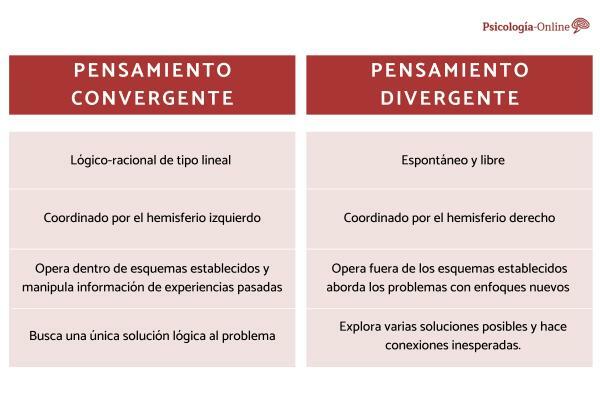For Cristina Roda Rivera placeholder image. Updated: 22 March 2018
To better understand the reason for the emergence of these new therapies, it is convenient to understand the first two waves of Behavior Therapy.
Since its inception, the so-called Behavior Therapy has been characterized by a monistic, direct, objective and rational study of human behavior and is framed within what is known as Experimental and Applied Analysis of Behavior (AEAP). The AEAP is the result of the data set empirically obtained through research at the level basic (experimental analysis) and applied (applied analysis) under the philosophy of Radical Behaviorism Eskinnearian. (Mañas, I 2007).
THE FIRST WAVE
The applied results from the behavioral tradition, whose main exponent was Applied Behavior Analysis, formed the so-called "First Wave" of Behavioral Therapies. The main purpose and interest of this first wave or movement was to overcome the limitations of the prevailing psychoanalytic model at that time and offer a alternative, which would be a clinical approach whose theory and practice were based on principles and laws of behavior obtained through the methodology scientific Therefore, instead of appealing to hypothetical or intrapsychic variables or constructs such as the conflicts of the unconscious or the Oedipus complex as causes of psychological problems, other variables were identified, such as contingencies of reinforcement or discriminative control of certain stimuli on the conduct. The emergent behavior therapy focused directly on the problem or clinical behavior in a direct way, that is, based on the principles of conditioning and learning, leaving aside techniques such as hypnosis or introspection.
This new clinical procedure based on the direct management of contingencies with clearly defined clinical objectives such as observable behavior has been called "first-order" changes. Among the main contributions of this stage we can highlight Eysenck and his commitment to empirically validate therapies, although later technical As the self-report was strongly criticized, Mary Cover Jones and her review of the learning principles proposed by Watson for the treatment of childhood phobias, Wolpe and his systematic desensitization technique or Teodoro Ayllon and Nathan Azrin and their token economy technique created in 1968.
Despite the progress that this first wave of behavior therapy, neither the associationist learning model or stimulus-response paradigm (initial Watsonian behaviorism) nor the experimental analysis of the behavior (Skinnerian radical behaviorism) were effective in treating certain psychological problems presented by adults.

These difficulties, coupled with the fact that none of these approaches offered an adequate empirical analysis of human language and cognition. assumed, as in the previous case, a turning point whose expression, once again, was developed through a second movement or wave: the named "Second Wave" of behavioral therapies or "Second Generation Therapies".
What is characteristic on this occasion of this second wave of therapies, which emerged last century, was the fact of considering thought or to cognition as the main cause of behavior and, therefore, as the cause and explanation of psychological phenomena and disorders.
Although this new wave of therapies, which can be grouped under the vast threshold of the so-called Cognitive-Behavioral Therapies, maintained (and still do) techniques focused on change due to contingencies or first-order (generated by the first wave of therapies), the variables of interest par excellence were transferred to cognitive events considering them, now, as the direct cause of behavior and, therefore, transforming thought into the main objective of intervention.
As a consequence, both the analysis variable as well as the objectives pursued and many of the techniques were focused on primarily in the modification, elimination, reduction or, in the alteration, in any of its forms, of the events private. (Mañas I, 2007).
In summary, the general assumption or premise that was established during this period can be summarized as follows: If the cause of the conduct is the thought (or emotion, mindset, belief, etc.), one has to change the thought (or emotion, pattern, belief or whatever) to change the conduct. This fundamental assumption or premise is shared by most of the people in our culture, that is, the The underlying rationale for second generation therapies is widespread and what most people. (When you stop thinking like that, it will be better for you, get rid of that thing in your head that does not do you any good, if you think you are shit, nothing will turn out well ...) This approach or philosophy is perfectly adapted to what is socially established as correct or what has to be done under certain circumstances; and, above all, with the ways of speaking and explaining that people in our society have, with the medical or psychiatric model and, therefore, with the idea of "mental illness".
Another consequence that derives from the previous approach or philosophy is consider that everything that causes discomfort or pain has to be quickly eradicated through all available means; especially, emphasizing the use of control strategies or techniques (such as the elimination, suppression, avoidance, substitution, etc.) of private events.
Within the wide range of second generation therapies are the most standardized and currently used, such as Beck's Cognitive Therapy for Depression (Beck, Rush, Shaw and Emery, 1979), Ellis's Rational Emotional Therapy (Ellis and MacLaren, 1998), Meinchenbaum's Self-Instruction Therapy (Meinchenbaum, 1977), as well as a multitude of programmed or standardized treatment packages covered, most of them, under the umbrella of cognitive therapies behavioral Although these therapies have been effective in treating multiple psychological problems, the truth is that there are still many unsolved problems. Some of these problems revolve around what is really effective within the set of techniques used by second-generation therapies.
This is easily noticed if we take into account that these therapies continue to use the techniques and procedures generated by first generation therapies (first-order changes), so it is difficult to contrast the real and effective value that those novel elements or components that they use could have independently. Furthermore, the effectiveness of these therapies has been related more to the behavioral components than to the cognitive components themselves. Such is the case of Albert Ellis's Rational Emotive Therapy (RET), which evolved into Therapy Emotional Rational Behavioral (REBT) after verifying the isolated effectiveness of these behavioral components (Ellis, 1994).
Another of the limitations The most important of the second-generation therapies are currently available experimental data that precisely indicate that attempts to control, reduce or elimination of private events (precisely explicit intervention objectives from these therapies) paradoxically produce, and in many cases, opposite or rebound effects. Among these effects, notable increases have been described both in intensity, frequency, as well as in duration, and even accessibility to unwanted private events (e.g., Cioffi and Holloway, 1993; Gross and Levenson, 1993, 1997; Gutiérrez, Luciano, Rodríguez and Fink, 2004; Sullivan, Rouse, Bishop and Johnston, 1997; Wegner and Erber, 1992). These data represent a clear challenge to the very principles and assumptions in which they are second generation therapies are well founded, threaten and violate their own foundations or philosophy base.
In summary, Hayes (2004a, b) has highlighted some of the main reasons that have led to the emergence (once again) of a new wave of behavioral therapies: The so-called "Third Wave of Behavioral Therapies" or the "Third Generation Therapies". These include the following:
- Lack of knowledge about why cognitive therapy works or fails.
- The existence of radically functional conceptions of human behavior.
- The Accelerating Curve of Basic Research in Language and Cognition from a Functional Perspective. This was an opportunity to group ways of doing things, many of them borrowed from "unscientific" therapies, and to create new methods.
But to understand the origins in a deeper way, the most important attempts and milestones that have shaped the entire development and establishment of behavior therapy to this day, a somewhat more extensive historical review must be made to make all of the above more understandable exposed.
Behavior therapy and the origins of third generation therapies.


